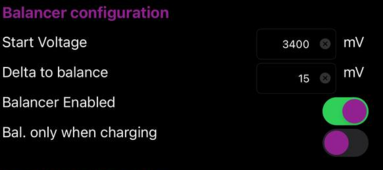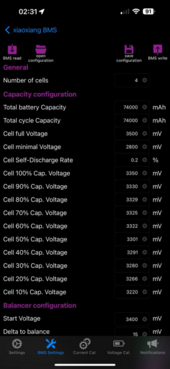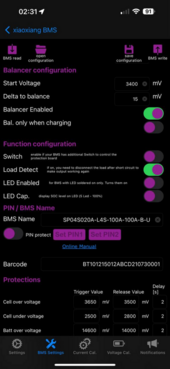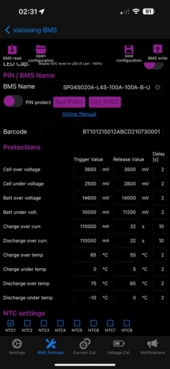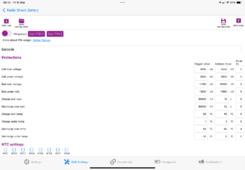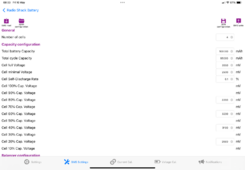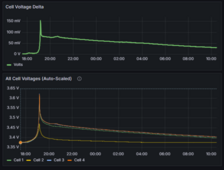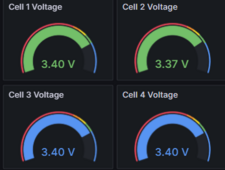podunk5812
New Member
I've got a set of 4 LEV60Fs in series, Xiaoxang BMS - set to balance even when not charging. When I discharge them, the voltages match quite nicely. When I charge them, they match until a certain point, and then one is lower than the others.
The charts below are from a full charge and they're now settling with no load attached.
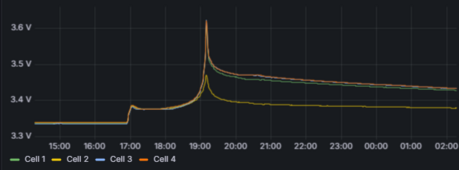
Here's the overall voltage delta:

Is this something to be concerned about? This is my first DIY battery pack. Thanks in advance!
The charts below are from a full charge and they're now settling with no load attached.

Here's the overall voltage delta:

Is this something to be concerned about? This is my first DIY battery pack. Thanks in advance!



